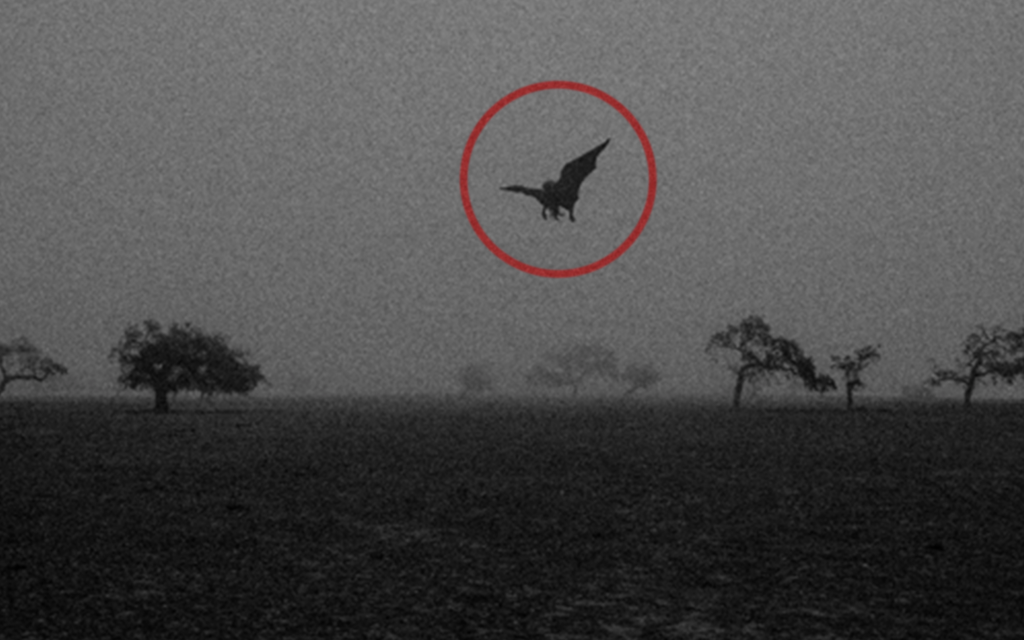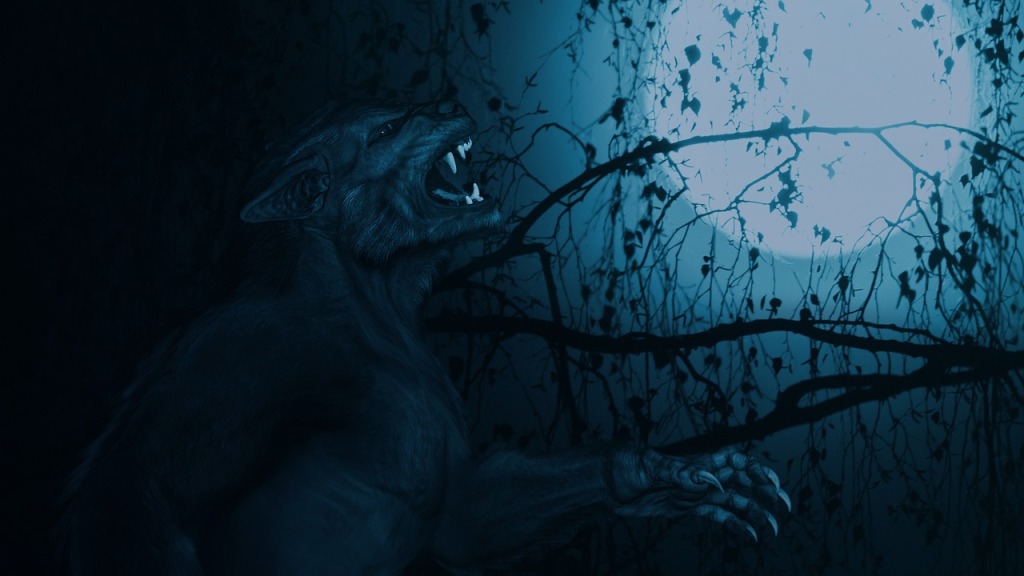
Chances are when you think of vampires you’ll think of Spike, Nick Knight, Miriam Blaylock, or any of the other fanged creatures-of-the-night that populate modern culture, including Mara from Love Lies Bleeding. The vampires we’re familiar with are (generally) human looking, powerful, often charismatic and attractive, with a thirst for blood and a dislike of stakes. But that wasn’t always the case. History and folklore are full of types of vampires that are nothing like what we’ve come to expect. Here are five examples…
Krasue

Similar to the penanggalan of Malaysia, the krasue is a type of ghostly vampire from Thailand that preys on chickens and cattle. The krasue has the face of a beautiful young woman (or sometimes an old woman), but instead of a body she has hanging organs and entrails. She’s also luminescent, and can be considered a form of will o’ the wisp. Like most vampires, she has fangs, and like most ghosts, she moves by floating. A common belief is that women who live sinful lives are cursed to become krasue after death (or that the curse will be passed on to their daughters and granddaughters). Another belief is that eating food contaminated by krasue saliva or flesh will turn someone into a krasue. And, as has been the case countless times throughout history, women in small communities acting “strangely” were/are suspected of being witches and monsters, or in this case– of becoming krasue at night. Krasue are always hungry, seeking out blood or flesh to consume. If blood isn’t available they’ll settle for rotting food, corpses, or feces. The krasue needs to reattach to her headless body before dawn, so destroying the body also destroys the krasue. Other ways to kill krasue include cutting the organs and entrails off or burning her. A krasue can be prevented from entering the home by surrounding it with something spiky, like bamboo, which the krasue will avoid in order not to get her entrails caught. There have been several krasue sightings in Thailand in recent years, most– but not all, debunked.
Manananggal

The manananggal is from the Philippines and is similar to the penanggalan and krasue in the way it separates from the lower half of its body, trailing intestines behind. Unlike the other two, the manananggal has large, bat-like wings, and can be either male or female (although they’re usually female). Another name for manananggal is “tik-tik,” which is the sound the tiktik birds make as they accompany the manananggal when they’re flying. Apparently the sound gets fainter the closer they get, a tactic meant to confuse their victims. One becomes a manananggal either by inheriting the condition, performing a ritual, or surviving a manananggal attack. While they have fangs, manananggal perch on roofs and use their long, proboscis-like tongues to suck the blood from sleeping victims. They’re also known to eat flesh and organs. Preferred prey is pregnant women, fetuses, and newlyweds (particularly the grooms, as manananggal is said to have been left at the altar). Like many vampires, manananggal hate garlic and holy water; unlike most vampires they also can’t stand salt, vinegar, spices, daggers, and the tails of stingrays. To keep a manananggal away from your house, leave pots of uncooked rice, salt, or ash around. To kill a manananggal, spread salt, ash, or crushed garlic on the detached lower half. The top half won’t be able to reattach and will then die at sunrise.
ETA: a commenter let me know that the manananggal can also transform into a wild pig (!), and that “Oftentimes, a woman suspected of being one is asleep during the day.” Thanks for the extra info!
Sasabonsam

Sasabonsam, also known as Asanbosam, is a vampiric being in the folklore of the Akan people of southern Ghana, Cote d’Ivoire, and Togo. Instead of feet they have iron hooks, which they use to dangle from trees in order to attack from above. They also have iron fanged teeth and bat-like features, including pointed ears and 6 metre- (20 foot-) long wings. Sasabonsam are territorial creatures, feeding on anyone who enters their forests. They eat flesh, as well as drinking blood, and they can infect people with a wasting illness (a common theme in vampire lore) with just a look. There is a claim that a man killed one by “fatally injuring it,” but I can’t find more details about it. Because of their hook feet, they can’t move well on the ground, so in theory you could get away from a Sasabonsam if you can run fast enough to get out from under the trees before they can grab you. Then again, it’s said that they like to play with their victims, like cats sometimes do with mice, so running might not help much.
Pricolici

A creature from Romanian folklore, the pricolici is a hybrid vampire-werewolf (together at last!) Some claim they are undead souls risen from the grave in wolf form. Others say that pricolici are werewolves in life, who then rise after death as vampires. Men who are cruel or violent in life are likely to become pricolici after death. In any case, pricolici are especially vicious undead that enjoy hurting the living.
Vrykolakas

Greece (influenced by the myths of neighbouring Slavic countries) brings us our final (for now) vampire: the vrykolakas. Interestingly, while vrykolakas is generally considered to be a vampire, its name (from the Bulgarian vǎrkolak) means werewolf, and by modern definitions it’s closer to a zombie than a vampire. Vrykolakas don’t decay after death, but their bodies become swollen with blood, giving them lifelike ruddy complexions. They generally roam around wreaking all sorts of havoc, including causing epidemics. Vrykolakas sometimes sit on victims as they sleep, crushing or suffocating them. It was also believed (and still is in some places) that they would knock on doors, calling the names of people inside; if anyone opened the door, they themselves would die within a few days and become a vampire. One could also become a vrykolakas by living a sacrilegious life, being buried in unconsecrated ground, or eating the meat of a sheep that had been injured or killed by a wolf. Like the pricolici, it was also thought that a werewolf could become a vampire after death, retaining wolf-like fangs, hairy palms, and glowing eyes. The vrykolakas eats flesh rather than drinking blood, and it has a particular fondness for livers (possibly with a nice Chianti). The longer they are allowed to roam and feed, the stronger they become. To kill a vrykolakas, the body needs to be destroyed, which is done by impaling, beheading, dismembering, or cremation. Destroying the body has to be done on a Saturday, which is when the vrykolakas is believed to rest. During the Great Famine of 1941-1942 in Greece, so many people died that burial on consecrated ground became impossible. Families started pre-emptively destroying bodies so that their loved ones wouldn’t become vrykolakas.
Have you heard of these vampires? Which do you think is scariest? Tell me in the comments…
Read my previous posts on this subject:
5 Vampires You May Not Have Heard Of
5 More Vampires You May Not Have Heard Of
Another 5 Vampires You May Not Have Heard Of
Yet Another 5 Vampires You May Not Have Heard Of
Can’t get enough vampires? Download my books!

Love Lies Bleeding: Smashwords, Barnes & Noble, Kobo, Apple Books
FREE Blood Magic: Smashwords, Barnes & Noble, Kobo, Apple Books
FREE Tooth & Claw: Smashwords, Barnes & Noble, Kobo, Apple Books
If you prefer paperback, use this link to order Love Lies Bleeding from Bookshop – a portion of each sale goes directly to independent bookstores, as well as to myself. Thank you for supporting indie! ♥
Further Reading
17 Facts About the Manananggal
Philippine Folklore: Meet the Vampiric, Cannibalistic Manananggal
10 Places Where Vampires May Exist
Astonishing Legends: Vrykolakas
Follow me on my official site: AspasiaSBissas.com
Cheers,
Aspasía S. Bissas


No comments:
Post a Comment